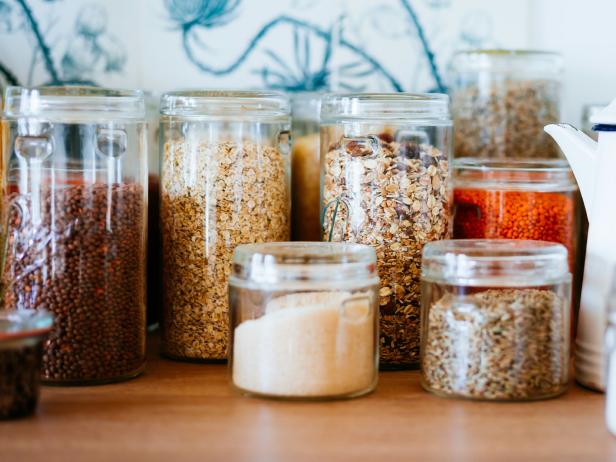Everything You Need to Know About Pantry Pests

What are these bugs?
Where there’s food, there might be critters (hey, pests like to eat, just as we do). The most-common pantry pests are moths, weevils and small beetles. Yes, they’re annoying, but not really dangerous — they won’t bite or sting, nor will they damage your home.
But my kitchen is clean!
Pests can make themselves at home in even in the most-spotless kitchen, because they often hitch a ride in your food at the grocery store, during delivery, or even way back at the processing plant or warehouse.
What foods attract them?
Most pantry pests like to munch on grains, like flours, cereals and processed foods, as well as dried fruits, beans, nuts and spices — but they’re not picky. Nearly any dried food that is stored at room temperature can be a draw. Opened packages that aren’t sealed well are especially prime targets, because they allow easy entry, but many insects can get into unopened packages as well.
Should I worry if I spot a couple of bugs on the counter?
If you come across a beetle or two in an area where you don't store food, it’s probably no cause for alarm — especially if the weather is warm (that’s when bugs flourish). But if you see them on the counter or floor near your pantry, or by a window (or other natural light source), it could be an early sign of infestation. It’s time to take a thorough look at your pantry shelves and packages.

Yep, there’s a bug in my package of rice. What now?
Throw away the box, and then check the packages stored near it. Can't see to the bottom of a bag? Pour the food onto a baking sheet and check it with a flashlight. If you don’t spot anything in the other packages or around the pantry, the bug was likely an isolated incident and your other foods are fine to keep. If you want to be extra-cautious, freeze any potentially affected products for three to four days, or heat them in an oven at 140 degrees F for an hour or two. This will kill any eggs or insects.
Yikes! A colony of weevils has spread everywhere. How do I get rid of them?
Empty your pantry completely and vacuum out the shelves, floors and corners. Then, wash the spaces down with soapy water — but don’t apply bleach, ammonia or pesticides. They won't prevent a future infestation and can be dangerous if they come in contact with foods. Before returning food products to the pantry, thoroughly check that each package is undamaged and uncontaminated.
Oops … what if I ate something that has a bug in it?
If you’ve just enjoyed a nice meal, and then spot a critter in that can of breadcrumbs or package of pasta, don’t worry. Pantry pests aren’t poisonous, and accidentally ingesting a bug or two won’t hurt you.

Joern Rynio, Joern Rynio
Now that my pantry is finally bug-free, how do I keep it that way?
First, the longer a product sits in your pantry, the more likely it is to become infested, so buy small packages you can use up in two to four months. Avoid packages that have dents, holes or scratches, and follow the “first in, first out” rule when using food up.
At home, transfer grains, cereals, nuts, dried fruit and the like to glass, metal or sturdy plastic containers with airtight lids. They keep insects out much better than cardboard, paper or foil. Store pantry basics in a cool, dry, dark place, and give your pantry a thorough cleaning every three to six months (which will help you stay organized and keep pests at bay).
Photos: Will Heap/Getty, Riou/Getty, JackJelly/iStock


































